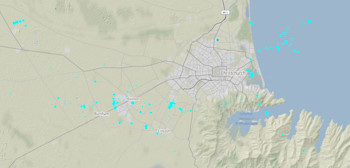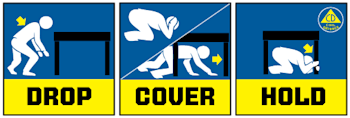
Recent Christchurch earthquakes within ‘expected behaviour’
This weekend's earthquakes were within the expected behavior for the 2010 Canterbury aftershock sequence.
In the past week, GeoNet has recorded 10 earthquakes south-west of Christchurch, between magnitude 1.2 and 3.5. The largest event occurred at 5:45 PM on Saturday 15 June and we received more than 4,000 felt reports.
The M3.5 event was shallow at 4km deep, which explains why it was felt by many in the area surrounding the earthquake epicentre.
Seismicity in the Canterbury region is still at higher levels than before 2010, this includes the earthquakes GeoNet is recording around Christchurch. However, this is within the expected behavior for the 2010 Canterbury aftershock sequence, even after more than a decade since the 2010-2011 earthquakes.
GNS scientists continue to closely monitor and produce earthquake forecasts for the Canterbury region generated by our computer models, which you can view on our site.
Aftershock sequences typically quieten down over time – but it can take years, decades or even centuries for seismicity in a region to return to a pre-influenced (before the mainshock) state.
It is difficult to attribute small magnitude earthquakes to a specific fault, but the events we have recorded in the past week fall within the region that ruptured during the M6.2 February 2011 Christchurch earthquake and the area where we have recorded aftershock events over the past 13 years.
We understand that some people might find these earthquakes unsettling. The All Right? website has great resources where you can read and talk about any concerns that you have.
Even though the events of the past week are consistent with what we observed for the Canterbury region in the past few years, every earthquake is a good reminder to be prepared. And to remember that drop, cover, hold is the right action to take during an earthquake.
Earthquakes can occur anywhere in New Zealand at any time. In the event of a large earthquake: Drop, Cover and Hold.
Remember Long or Strong, Get Gone : If you are near the coast, or a lake, and feel a strong earthquake that makes it hard to stand up OR a weak rolling earthquake that lasts a minute or more move immediately to the nearest high ground or as far inland as you can, out of tsunami evacuation zones.
Know what to do?
The National Emergency Management Agency (NEMA) has a great website with information on what to do before, during and after an earthquake.
Prepare your home. Protect your whānau.
There’s a lot we can do to make our homes safer and stronger for natural hazards. EQC Toka Tū Ake's website has key steps to get you started.
Media Contact: 021 574 541 or media@gns.cri.nz




